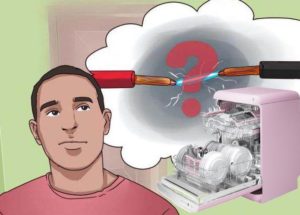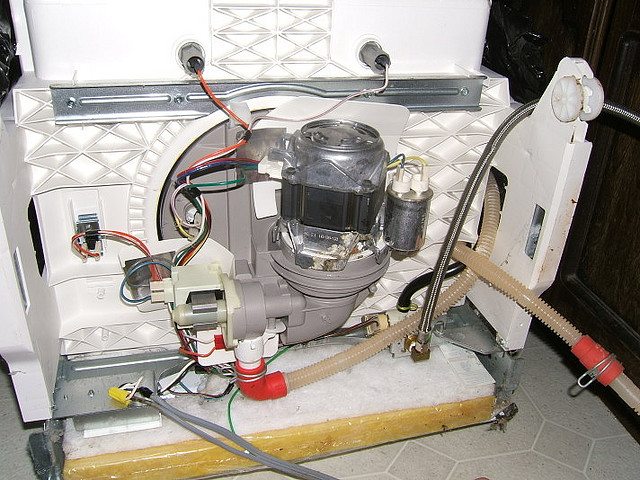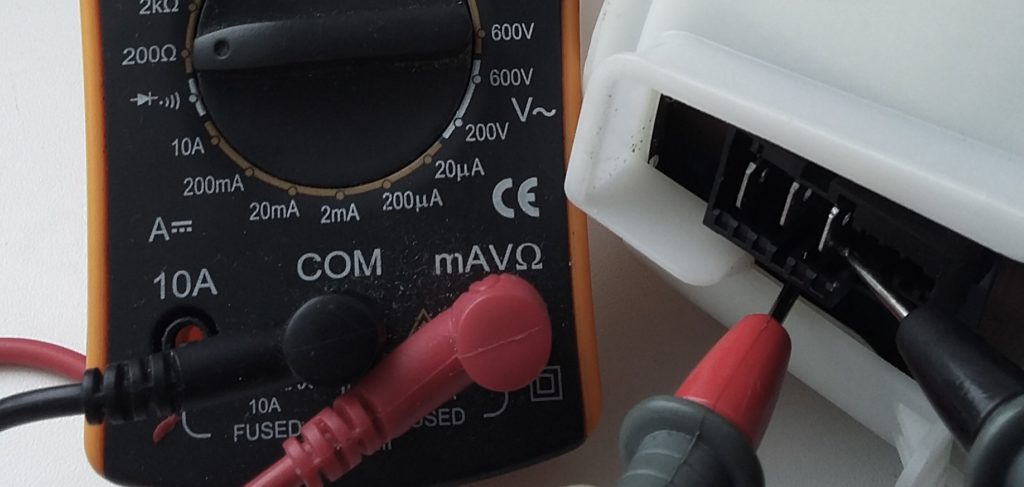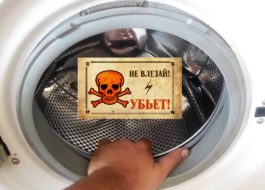Why is my dishwasher electrocuted?
 When a problem arises with your dishwasher electrocuting, you immediately need to start looking for the cause. It is best to call a good technician for this, who knows everything about electrics. But while the master is not there, you can read the article and find out the reasons for this situation.
When a problem arises with your dishwasher electrocuting, you immediately need to start looking for the cause. It is best to call a good technician for this, who knows everything about electrics. But while the master is not there, you can read the article and find out the reasons for this situation.
Causes
Why is the dishwasher electrocuted? Yes, because there is a current leakage onto the body of the machine. All the reasons for this can be divided into two groups, the first group is associated with a malfunction of the machine itself and most often occurs after some time of using the equipment. The second group of reasons is associated with improper connection of the dishwasher, or rather with the electrical network. At the same time, even a new machine can start to “bite”. We list all possible reasons:
- the insulation of the wiring inside the dishwasher is broken;
- the engine of the washing machine is broken;
- heater breakdown;
- the socket is faulty;
- no grounding.
If the socket is grounded, but the machine generates current, then check the socket itself; the contacts in it may be oxidized. It is enough to clean them, and the problem will be eliminated.
Checking the heating element
Most often, the reason that a washing machine is electrocuted lies in a broken heating element. To check it, you need to remove the heater, for this you need:
- disconnect equipment from the network and water supply;
- remove the dish baskets, garbage filter and sprinklers from the tank;
- if there is one, unscrew the screws under the mesh (at the bottom of the tank);
- turn the dishwasher over so that you can access its bottom;

- remove the bottom;
- we find the heater and disconnect it from the pipe;
- disconnect all the chips with wires from the heating element;
- we take out the heater and inspect it; already at this stage a breakdown can be detected;
- To verify the malfunction, you can lower the heating element into a salt solution, and then measure the resistance between the heater and the solution. If the device shows resistance, it means the heater is broken.
Important! The saline test does not always help identify the problem.
- if there really is a breakdown of the part, replace the heater with a new one.
The second way to check the heater is dry as follows:
- set the unit of measurement on the multimeter to Ohms;
- apply the probe of the device to the contacts of the heater;

- a serviceable part has a resistance within 21-22 Ohms, a faulty one has an infinite resistance;
- after checking the heater, check the part for current leakage to the body, switching the multimeter to MegaOhms for this;
- We place one probe of the device on the contact of the heater, and the second on its body. It can be applied not to the body, but to the grounding contact. If the heater is working properly, there should be infinite resistance on the device.
Important! When taking measurements, the pump and heater must be completely dry, otherwise the RCD will trip when the dishwasher is running, and then the resistance will not be equal to infinity.
How to check wiring and motor
It seems clear why the dishwasher shocks you, but what do you do when it behaves like this? Quite often the leak is caused by wiring or the engine housing. In our practice, there have been cases when mice appeared in the dishwasher and, gnawing on the wiring, created a similar problem.
If you suspect this is happening to you, smell the dishwasher body. Mice shelters usually emit a specific unpleasant odor.If you notice a smell, open the machine.
 Even if there are no mice in the machine, the bulk wiring inside could be defective, with damaged insulation, or the insulation has become frayed over time. Visually inspect each wire, especially pay attention to the bases of each wire where they connect to chips or terminals. If you find a damaged wire, replace it.
Even if there are no mice in the machine, the bulk wiring inside could be defective, with damaged insulation, or the insulation has become frayed over time. Visually inspect each wire, especially pay attention to the bases of each wire where they connect to chips or terminals. If you find a damaged wire, replace it.
If you have the skill, you can use a multimeter. It also helps in finding a damaged wire, but visual inspection has not been canceled. If the wiring is OK, check the engine. If the winding leaks onto the housing, then the engine may well begin to shock. This can also be checked easily using a multimeter. A broken winding is not suitable for further operation; the motor will have to be replaced. You can, of course, try to rewind the part, but this will cost more.
So, you shouldn’t ignore this problem with your dishwasher. But how to fix it, make a decision yourself, call a technician or look for and fix the problem yourself. Just remember, you need to be extremely careful with electricity!
Interesting:
Reader comments
- Share your opinion - leave a comment





















Add a comment